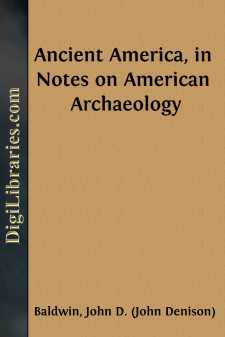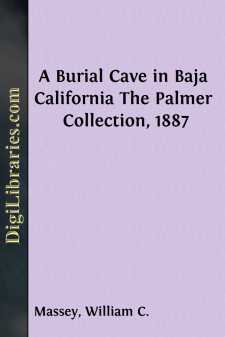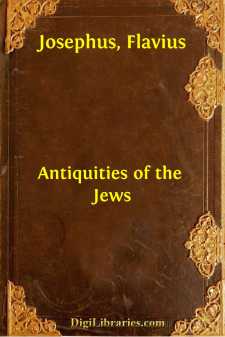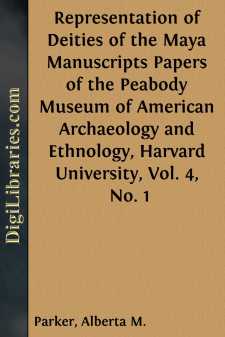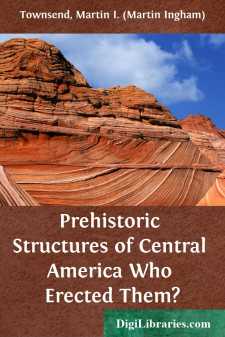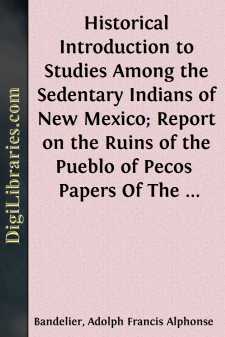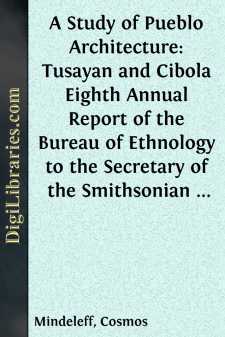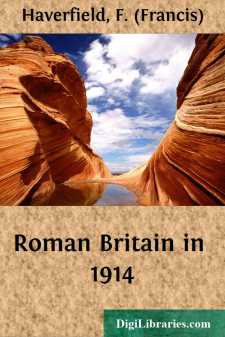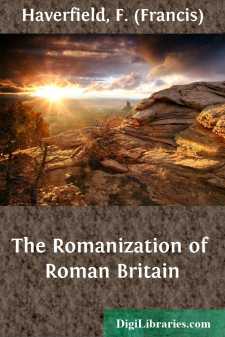Religion
- Agnosticism 2
- Antiquities & Archaeology
- Atheism 12
- Biblical Criticism & Interpretation 15
- Biblical Meditations 3
- Biblical Reference 1
- Biblical Studies 11
- Buddhism 8
- Christian Church 52
- Christian Education 5
- Christian Life 26
- Christianity 60
- Cults 2
- Devotional 6
- Eastern 2
- Education 4
- Eschatology 1
- Ethics 3
- General 60
- Gnosticism 1
- Hinduism 15
- History 28
- Holidays 10
- Inspirational 1
- Islam 8
- Judaism 3
- Leadership 1
- Meditations 3
- Monasticism 1
- Mysticism 11
- Philosophy 4
- Prayer 26
- Prayerbooks 5
- Religion & Science 12
- Sermons 54
- Spirituality 53
- Theism 2
- Theology 17
- Theosophy 15
Antiquities & Archaeology Books
Sort by:
THE MOUND-BUILDERS. One of the most learned writers on American antiquities, a Frenchman, speaking of discoveries in Peru, exclaims, “America is to be again discovered! We must remove the veil in which Spanish politics has sought to bury its ancient civilization!” In this case, quite as much is due to the ignorance, indifference, unscrupulous greed, and religious fanaticism of the Spaniards, as to...
more...
In December of 1887 Dr. Edward Palmer, the naturalist, set sail from the port of Guaymas in Sonora, crossed the Gulf of California, and landed at BahÃa de Los Angeles on the peninsula of Baja California. Then, as now, there was a modest gold-mining operation at the bay. During his brief stay at the mining station, Dr. Palmer excavated a small natural cave which had been used by the Indians who...
more...
by:
Flavius Josephus
CHAPTER 1. The Constitution Of The World And The Disposition Of The Elements. 1. In the beginning God created the heaven and the earth. But when the earth did not come into sight, but was covered with thick darkness, and a wind moved upon its surface, God commanded that there should be light: and when that was made, he considered the whole mass, and separated the light and the darkness; and the name he...
more...
THE MATERIAL OF THE MANUSCRIPTS. The three manuscripts which we possess of the ancient Maya peoples of Central America, the Dresden (Dr.), the Madrid (Tro.-Cort.) and the Paris (Per.) manuscripts, all contain a series of pictorial representations of human figures, which, beyond question, should be regarded as figures of gods. Together with these are a number of animal figures, some with human bodies,...
more...
INTRODUCTION. It was not a long period after 1492, when the great Italian navigator with his Spanish crew made their first discoveries upon the central portion of America, that the Europeans, who had followed the footsteps of Christopher Columbus, began to fall in with structures of great magnitude and architectural beauty scattered widely throughout Mexico, Guatemala and Yucatan, &c.; and when the...
more...
by:
George Bryce
The Mound Builders. A Lost Race Described by Dr. Bryce, President of the Historical Society. SEASON 1884-85 Ours are the only mounds making up a distinct mound-region on Canadian soil. This comes to us as a part of the large inheritance which we who have migrated to Manitoba receive. No longer cribbed, cabined, and confined, we have in this our "greater Canada" a far wider range of study than...
more...
Part I. The earliest knowledge of the existence of the sedentary Indians in New Mexico and Arizona reached Europe by way of Mexico proper; but it is very doubtful whether or not the aborigines of Mexico had any positive information to impart about countries lying north of the present State of Querétaro. The tribes to the north were, in the language of the valley-confederates,...
more...
by:
Cosmos Mindeleff
INTRODUCTION. The remains of pueblo architecture are found scattered over thousands of square miles of the arid region of the southwestern plateaus. This vast area includes the drainage of the Rio Pecos on the east and that of the Colorado on the west, and extends from central Utah on the north beyond the limits of the United States southward, in which direction its boundaries are still undefined. The...
more...
PREFACE The contents of the present volume are of much the same character as those of its predecessor, 'Roman Britain in 1913'. The first section gives a retrospect of the chief finds made in 1914, so far as they are known to me. The second section is a more detailed and technical survey of the inscriptions found in Britain during that year. The third and longest section is a summary, with...
more...
CHAPTER I THE ROMANIZATION OF THE EMPIRE Historians seldom praise the Roman Empire. They regard it as a period of death and despotism, from which political freedom and creative genius and the energies of the speculative intellect were all alike excluded. There is, unquestionably, much truth in this judgement. The world of the Empire was indeed, as Mommsen has called it, an old world. Behind it lay the...
more...


